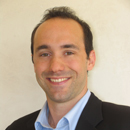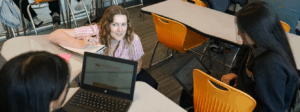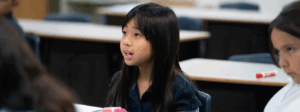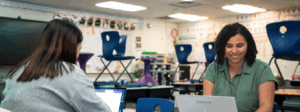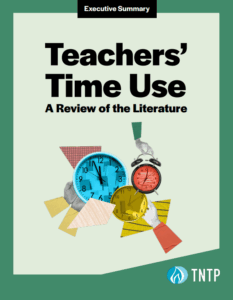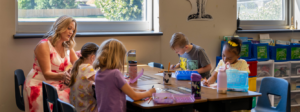We knew these presentations would be different. SparkNC gathered 32 students from 12 school districts to participate in a two-day design exercise in Wilmington, N.C. The event kicked off the SparkNC’s work to help school districts improve how they are preparing students for high-tech careers. SparkNC is an initiative of The Innovation Project, a collaborative of 17 school districts dedicated to innovation in public education and a TNTP partner.
In a day of design facilitated by Raleigh-based nonprofit District C, students were asked the question, “What kinds of learning experiences might you design to help students learn about, prepare for, and pursue high-tech jobs?” They were put into groups of four and began designing their ideas.
The next day they reconvened for their presentations. The first group pulled no punches, immediately describing many of their classes as “uninspiring” but that they would be excited to dig in on new learning opportunities. The second group observed that, not only was it important for students to be excited about high-tech careers, but it was also just as important for teachers, who were growing increasingly disengaged throughout the COVID-19 pandemic, to get new learning experiences too. They then suggested ways that teachers and industry professionals could team to prepare students for high-tech careers. I could definitely see how their idea could be part of a larger strategy to support high-tech learning by redesigning teacher roles.
The presentations continued, and the students offered some insightful, concrete programmatic ideas, including:
- A scope and sequence for grades 7 through 12 to help students learn a series of programming languages. In addition to suggesting which languages students should learn, the recommendations also included thoughtful scaffolding of skills;
- A concept for a new company the presenting group called “Masterly” that would connect students with internships and work-based learning opportunities;
- A concept for a social STEM camp—a unique summer camp experience that would help high school students interested in high-tech connect with peers;
- An app that would support tech career goals. Based on answers to questions about work style, projects and problem solving, the app would suggest which high-tech career was right for the user. Moreover, the students converted the app into a BuzzFeed survey for all of us to take in real time during their live presentation.
It was easy to see how these ideas were different than what adults would have come up with. They were focused and designed to unapologetically fix huge pain points. I found myself repeatedly taking the BuzzFeed quiz and seriously thinking that a Masterly should be created. I felt challenged to dig deeper about what we could do to support teachers and learned how much students interested in STEM careers want to connect with one another.
At first, I wanted to understand how they did it. I wanted to uncover a magic formula that explained student creativity. But now I realize there is a bigger point.
Their contributions proved that the student voice deserves a seat at the table to design ideas that will transform their education. As adults, we can’t recreate their thinking—and why would we? Their insights added invaluable perspective that we can’t replicate. Students need to be included, not only at the beginning of the process, but throughout. Their contributions go beyond having great ideas, too. Involving students in ongoing design and decision-making systems puts pressure on school systems to think differently and invest in ideas that matter to their communities. This is exactly what we mean by authentic community engagement.
SparkNC kicked their work off right by asking students to be designers and collaborators in their own future. And they are committed to having students at the table throughout their design-build process, weighing in on key decisions and participating in program design and continuous improvement. But SparkNC wants to go even further. On that same day that students engaged in this design work, TNTP facilitated a focus group with their parents. Senior leaders from the participating districts listened in as families discussed their perspective on questions such as:
- What experiences do you think would get your students excited about high-tech careers?
- What might limit your child from thinking about high-tech jobs?
- What suggestions would you offer your district leadership about how to work with you?
Among other key insights, the family members encouraged districts to introduce career exploration in the early grades, expressed a need for their children to have more social experiences to connect students with similar career aspirations, and provided specific suggestions to increase student access to and engagement in programs.
As more school communities reimagine what schooling could look like and make decisions about how to invest resources, the next couple of years provides a perfect opportunity for school communities everywhere to invite students—and their families—in as full partners.

